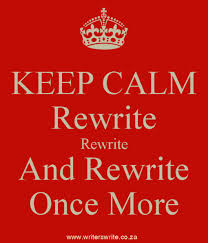Regardless whether you summarize, paraphrase, or directly quote, outside sources must be integrated smoothly into your essay. Research that is stuck in carelessly without careful integration runs the risk of sounding like it doesn’t belong, creating paragraphs that lack cohesiveness and focus. Instructors often refer to this as the “cut and paste” research paper that will often garner a failing grade. Follow the tips below to learn how to integrate source material effectively.
Tip # 1: Write the draft first
Before you begin to integrate your sources, you need something to integrate them into. Writers who try to compose a paper at the same time they are integrating sources find they lose their “voice,” and begin to sound like the voice of the research they are quoting. To avoid this, write a first draft of your paper, with only your words and your voice doing the talking. By taking this first step in getting your ideas on paper, you’ll avoid letting the research take over. Some instructors require a rough draft before even integrating source material to confirm you are not borrowing others’ ideas.
Tip # 2: Use Attributive Tags
Attributive, or author tags, refers to a few words of introduction of your source. An attributive tag includes the author’s name, and varying information depending on the context, including the author’s professional title (is he or she a “Dr.” Scientist,” “Researcher,” or “Professor”?), the article’s title, and any other relevant information, which could include the author’s position on the subject (“John Smith, ecologist and staunch opponent of keeping animals in captivity. . .”).
An author tag identifies the information presented as coming from an outside source and not you. You must make clear throughout your paper what information is coming from outside sources. Failing to use attributions is considered a type of unintentional plagiarism.
Tip # 3: Vary the way author tags are used
Author tags can be incorporated in 3 ways:
- The author tag can be introduced first before the quoted material.
- The author tag can be placed in the middle of the quoted material.
- The author tag can be placed at the end of the quoted material.
EX. 1
Vivian Cook, author of Second Language Learning and Language Teaching, says that “there is no such thing as the classroom, as classrooms vary in so many ways” (149).
EX. 2
“There is no such thing as the classroom,” says Vivian Cook, author of Second Language Learning and Language Teaching, “as classrooms vary in so many ways” (149).
EX. 3
“There is no such thing as the classroom, as classrooms vary in so many ways,” says Vivian Cook, author of Second Language Learning and Language Teaching (149).
Note that in the first example, there is no comma after that, as it reads as a continuous thought. If the attribution ended with the word says, it would have a comma immediately after “says” and the first word of the quoted sentence would be capitalized.
Vivian Cook, author of Second Language Learning and Language Teaching, says, “There is no such thing as the classroom, as classrooms vary in so many ways” (149)
Tip # 4: Use a colon when the author tag is a full sentence
The rule for using a colon following an attributive tag is if the tag is a complete sentence or independent clause, it must be followed by a colon. (Note that the author tags in the previous examples are all technically sentence fragments.)
Incorrect:
Cameron believes artists should stop making excuses for not following their dreams. “Stop waiting until you make enough money to do what you really love” (57).
The quote above is an example of a dangling quote, or a quote that stands alone as a sentence. You can often (though not always) correct this mistake by taking the previous sentence and place a colon at the end instead of a period:
Correct:
Cameron believes artists should stop making excuses for not following their dreams: “Stop waiting until you make enough money to do what you really love” (57)
Tip #5: Use attributive tags with paraphrases and summary
When incorporating paraphrase and summary, it is impossible to tell if the information is the thoughts of the writer or from an outside source without attributive tags. In the examples below, the writer includes the name of the source, even though it is a paraphrase and not a direct quote. By doing this, the reader knows the information is coming from research and not the writer:
In Talking from 9 to 5, Deborah Tannen explains that for women in the workplace, the situation is changing, whether we talk about it or not (130).
Nickerson argues that clear communication hinges upon what an audience does and does not know. It is crucial to assume the audience has neither too much nor too little knowledge of the subject, or the communication may be inhibited by either confusion or offense (737).
As you work on integrating your source material –
- Avoid using two quotations in a row without intervening (explanatory) material of your own.
- Avoid referring to your sources as quotes. Instead of, “In this quote,” write “Here we see. . .” or “As Smith points out. . .”. (http://library.rpcc.edu)
- Introduce the quote; quote; explain the quote. Always place outside research in context to the point you are attempting to make, and do it in your own words.
Taking care to integrate your outside source material will result in a top-notch research essay that will flow naturally and earn you respect as a thorough and fair researcher.







